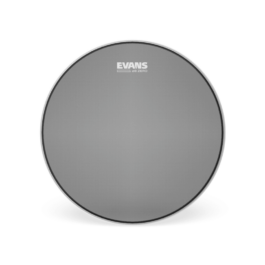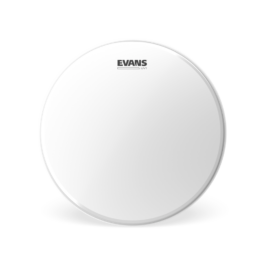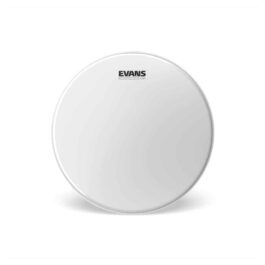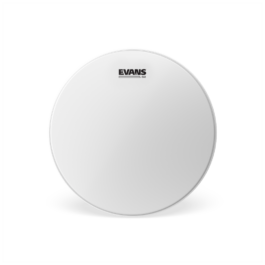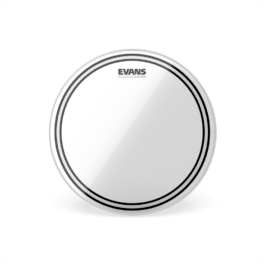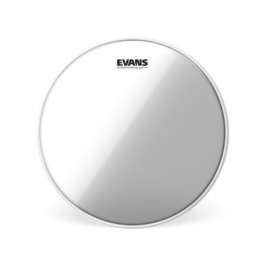
When you’re new to playing acoustic drum kits, the maintenance that comes with owning and playing an acoustic kit can be daunting. This is specifically true when it comes to drum heads. “When do I need to replace them?”, and “Which ones should I buy?” are the most common questions asked by almost everyone at one point or another.
We’re going to break down these questions and arm you with a little bit of knowledge to help you decide when to change your heads, and what type of heads may be right for you!
When is the right time to change my drum heads?

It may seem obvious, but the drum head is the section of each drum that will wear out and take a beating (no pun intended) long before anything else. This, coupled with the fact that they are usually made out of a very thin piece of mylar, means that drum heads do eventually break and require replacement.
But it’s best to not wait until your heads eventually break, as they often lose their shape, and therefore sound, long before this. A good rule of thumb is to consider replacing your drum heads once they become dented in certain areas. This means the head has worn significantly, and is on it’s way to breaking.
Which drum heads should I buy?
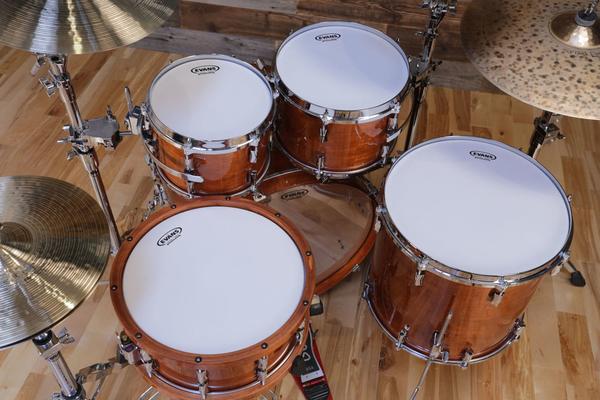
Unfortunately there isn’t a simple answer to this question, as different types of drum heads are suited to different use cases. We’re going to break down some of these use cases and link them to their ideal type of drum head, and define a few common terms you’ll often hear used in relation to drum heads.
Batter vs. Resonant
The first step is to understand the difference between a batter head and a resonant head. Put simply, the batter head is the side that gets hit by the drum stick, and the resonant head is placed on the underside of the drum to aid in resonance. Generally speaking, it is only the batter heads that require regular replacement.
Single Ply vs. Double Ply
1-Ply: Single Ply drum heads are the most basic, comprised of only one sheet of mylar. While this does work to the detriment of durability, they have a tendency to bring out the overtones in your drum sound and are very responsive to lighter touches. For this reason, 1-ply drum heads are an excellent choices for styles such as Jazz, Acoustic Rock, or Worship music.
2-Ply: These are the better choice for louder types of music. While they sacrifice some resonance, these will give you a better attack, and will cut through in loud environments like rock, metal, or punk music. And thanks to the second ply, they are also far more durable, again lending themselves toward harder playing.
Clear vs. Coated
Coating on a drumhead creates a somewhat muffled sound by comparison to clear heads. Clearer heads tend to sound brighter and more open, while coated heads are great for snare drums and critical if you play with brushes. You can’t get that beautiful “sandpaper” kind of sound with a clear snare head and brushes. Coated heads on toms tend to make the drums a bit warmer, while clear tom heads will give you more attack, and the same is true for kick drums same goes for your kick drum.
Choosing the drum heads you will go on to play for years is a personal decision, and one we couldn’t hope to answer for you by means of an article. But now that you’re armed with some basic knowledge, we hope you can go shopping for your next set of drum heads with a little more confidence.
Looking for some personalized advice?
Shop drum heads now...
-
Request Stock
- Out of Stock
- Drums & Percussion, Drum Heads, 12" Drum Heads
Evans dB ZERO 10″ Mesh Drumhead
-
R355R285 - Select options
-
-
Request Stock
- Out of Stock
- Drums & Percussion, Drum Heads, 18"Drum Heads
Evans 18” UV1 Coated Drum Head
-
R595R435 - Select options
-
-
- Drums & Percussion, Drum Heads, 14" Drum Heads
Evans 14” UV1 Coated Drum Head
-
R795R595FREE DELIVERY - Select options
-
Request Stock
- Out of Stock
- Drums & Percussion, Drum Heads, 18"Drum Heads
Evans G2 18″ Coated Drumhead
-
R870R695FREE DELIVERY - Select options
-
-
Request Stock
- Out of Stock
- 13" Drum Heads, Drum Heads, Drums & Percussion
Evans Snare Side 500 13″ Drumhead
-
R330R240 - Select options
-
-
Request Stock
- Out of Stock
- Drums & Percussion, Drum Heads, 10" Drum Heads
Evans EC2S 10″ Clear Drumhead
-
R379R275 - Select options
-
-
Request Stock
- Out of Stock
- Drums & Percussion, Drum Heads, 13" Drum Heads
Evans Snare Side 300 13″ Drumhead
-
R330R240 - Select options
-


